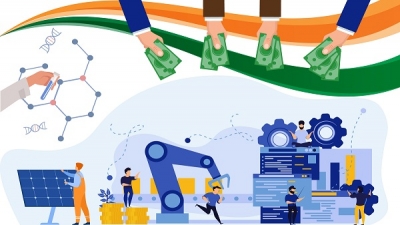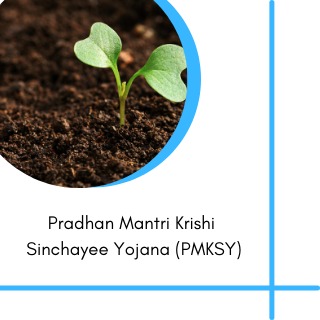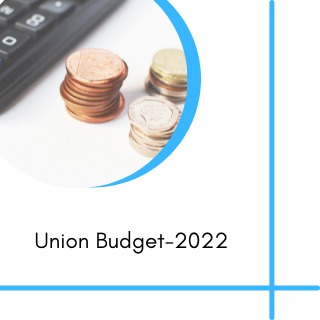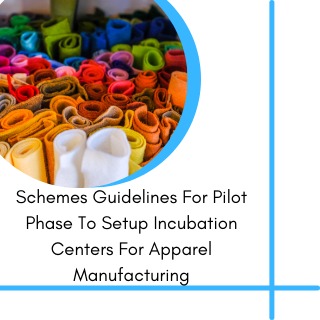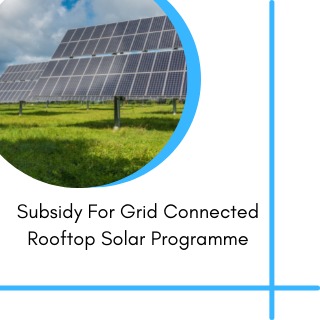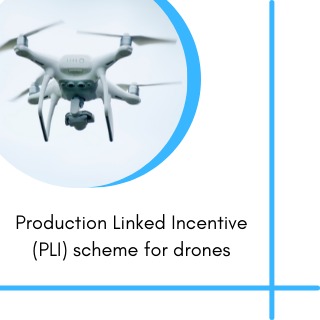The Union Budget 2022 seeks to complement macro-economic level growth with a focus on micro-economic level all inclusive welfare. The Union Minister for Finance & Corporate Affairs, Smt Nirmala Sitharaman tabled the Union Budget 2022-23 in Parliament today.
The key highlights of the budget are as follows:
PART A
- India’s economic growth estimated at 9.2% to be the highest among all large economies.
- 60 lakh new jobs to be created under the productivity linked incentive scheme in 14 sectors.
- PLI Schemes have the potential to create an additional production of Rs 30 lakh crore.
- Entering Amrit Kaal, the 25 year long lead up to India @100, the budget provides impetus for growth along four priorities:
- PM GatiShakti
- Inclusive Development
- Productivity Enhancement & Investment, Sunrise opportunities, Energy Transition, and Climate Action.
- Financing of investments
PM GatiShakti
- The seven engines that drive PM GatiShakti are Roads, Railways, Airports, Ports, Mass Transport, Waterways and Logistics Infrastructure.
PM GatiShkati National Master Plan
- The scope of PM GatiShakti National Master Plan will encompass the seven engines for economic transformation, seamless multimodal connectivity and logistics efficiency.
- The projects pertaining to these 7 engines in the National Infrastructure Pipeline will be aligned with PM GatiShakti framework.
Road Transport
- National Highways Network to be expanded by 25000 Km in 2022-23.
- Rs 20000 Crore to be mobilized for National Highways Network expansion.
Multimodal Logistics Parks
- Contracts to be awarded through PPP mode in 2022-23 for implementation of Multimodal Logistics Parks at four locations.
Railways
- One Station One Product concept to help local businesses & supply chains.
- 2000 Km of railway network to be brought under Kavach, the indigenous world class technology and capacity augmentation in 2022-23.
- 400 new generation Vande Bharat Trains to be manufactured during the next three years.
- 100 PM GatiShakti Cargo terminals for multimodal logistics to be developed during the next three years.
Parvatmala
- National Ropeways Development Program, Parvatmala to be taken up on PPP mode.
- Contracts to be awarded in 2022-23 for 8 ropeway projects of 60 Km length.
Inclusive Development
Agriculture
- Rs. 2.37 lakh crore direct payment to 1.63 crore farmers for procurement of wheat and paddy.
- Chemical free Natural farming to be promoted throughout the county. Initial focus is on farmer’s lands in 5 Km wide corridors along river Ganga.
- NABARD to facilitate fund with blended capital to finance startups for agriculture & rural enterprise.
- ‘Kisan Drones’ for crop assessment, digitization of land records, spraying of insecticides and nutrients.
Ken Betwa project
- 1400 crore outlay for implementation of the Ken – Betwa link project.
- 9.08 lakh hectares of farmers’ lands to receive irrigation benefits by Ken-Betwa link project.
MSME
- Udyam, e-shram, NCS and ASEEM portals to be interlinked.
- 130 lakh MSMEs provided additional credit under Emergency Credit Linked Guarantee Scheme (ECLGS)
- ECLGS to be extended up to March 2023.
- Guarantee cover under ECLGS to be expanded by Rs 50000 Crore to total cover of Rs 5 Lakh Crore.
- Rs 2 lakh Crore additional credit for Micro and Small Enterprises to be facilitated under the Credit Guarantee Trust for Micro and Small Enterprises (CGTMSE).
- Raising and Accelerating MSME performance (RAMP) programme with outlay of Rs 6000 Crore to be rolled out.
Skill Development
- Digital Ecosystem for Skilling and Livelihood (DESH-Stack e-portal) will be launched to empower citizens to skill, reskill or upskill through on-line training.
· Startups will be promoted to facilitate ‘Drone Shakti’ and for Drone-As-A-Service (DrAAS).
Education
- ‘One class-One TV channel’ programme of PM eVIDYA to be expanded to 200 TV channels.
· Virtual labs and skilling e-labs to be set up to promote critical thinking skills and simulated learning environment.
- High-quality e-content will be developed for delivery through Digital Teachers.
- · Digital University for world-class quality universal education with personalised learning experience to be established.
Health
- An open platform for National Digital Health Ecosystem to be rolled out.
- ·National Tele Mental Health Programme’ for quality mental health counselling and care services to be launched.
- A network of 23 tele-mental health centres of excellence will be set up, with NIMHANS being the nodal centre and International Institute of Information Technology-Bangalore (IIITB) providing technology support.
Saksham Anganwadi
- Integrated benefits to women and children through Mission Shakti, Mission Vatsalya, Saksham Anganwadi and Poshan 2.0.
- Two lakh anganwadis to be upgraded to Saksham Anganwadis.
Har Ghar, Nal Se Jal
- Rs. 60,000 crore allocated to cover 3.8 crore households in 2022-23 under Har Ghar, Nal se Jal.
Housing for All
- Rs. 48,000 crore allocated for completion of 80 lakh houses in 2022-23 under PM Awas Yojana.
Prime Minister’s Development Initiative for North-East Region (PM-DevINE)
- New scheme PM-DevINE launched to fund infrastructure and social development projects in the North-East.
- An initial allocation of Rs. 1,500 crore made to enable livelihood activities for youth and women under the scheme.
Vibrant Villages Programme
- Vibrant Villages Programme for development of Border villages with sparse population, limited connectivity and infrastructure on the northern border.
Banking
- 100 per cent of 1.5 lakh post offices to come on the core banking system.
- Scheduled Commercial Banks to set up 75 Digital Banking Units (DBUs) in 75 districts.
e-Passport
- e-Passports with embedded chip and futuristic technology to be rolled out.
Urban Planning
- Modernization of building byelaws, Town Planning Schemes (TPS), and Transit Oriented Development (TOD) will be implemented.
- Battery swapping policy to be brought out for setting up charging stations at scale in urban areas.
Land Records Management
- Unique Land Parcel Identification Number for IT-based management of land records.
Accelerated Corporate Exit
- Centre for Processing Accelerated Corporate Exit (C-PACE) to be established for speedy winding-up of companies.
AVGC Promotion Task Force
- An animation, visual effects, gaming, and comic (AVGC) promotion task force to be set-up to realize the potential of this sector.
Telecom Sector
- Scheme for design-led manufacturing to be launched to build a strong ecosystem for 5G as part of the Production Linked Incentive Scheme.
Export Promotion
- Special Economic Zones Act to be replaced with a new legislation to enable States to become partners in ‘Development of Enterprise and Service Hubs’.
AtmaNirbharta in Defence:
- 68% of capital procurement budget earmarked for domestic industry in 2022-23, up from 58% in 2021-22.
· Defence R&D to be opened up for industry, startups and academia with 25% of defence R&D budget earmarked.
· Independent nodal umbrella body to be set up for meeting testing and certification requirements.
Sunrise Opportunities
- Government contribution to be provided for R&D in Sunrise Opportunities like Artificial Intelligence, Geospatial Systems and Drones, Semiconductor and its eco-system, Space Economy, Genomics and Pharmaceuticals, Green Energy, and Clean Mobility Systems.
Energy Transition and Climate Action:
- Additional allocation of Rs. 19,500 crore for Production Linked Incentive for manufacture of high efficiency solar modules to meet the goal of 280 GW of installed solar power by 2030.
· Five to seven per cent biomass pellets to be co-fired in thermal power plants:
- CO2 savings of 38 MMT annually,
- Extra income to farmers and job opportunities to locals,
- Help avoid stubble burning in agriculture fields.
· Four pilot projects to be set up for coal gasification and conversion of coal into chemicals for the industry
· Financial support to farmers belonging to Scheduled Castes and Scheduled Tribes, who want to take up agro-forestry.
Public Capital Investment:
- Public investment to continue to pump-prime private investment and demand in 2022-23.
- Outlay for capital expenditure stepped up sharply by 35.4% to Rs. 7.50 lakh crore in 2022-23 from Rs. 5.54 lakh crore in the current year.
- Outlay in 2022-23 to be 2.9% of GDP.
- ‘Effective Capital Expenditure’ of Central Government estimated at Rs. 10.68 lakh crore in 2022-23, which is about 4.1% of GDP.
GIFT-IFSC
- World-class foreign universities and institutions to be allowed in the GIFT City.
- An International Arbitration Centre to be set up for timely settlement of disputes under international jurisprudence.
Mobilising Resources
- Data Centres and Energy Storage Systems to be given infrastructure status.
· Venture Capital and Private Equity invested more than Rs. 5.5 lakh crore last year facilitating one of the largest start-up and growth ecosystem. Measures to be taken to help scale up this investment.
· Blended funds to be promoted for sunrise sectors.
· Sovereign Green Bonds to be issued for mobilizing resources for green infrastructure.
Digital Rupee
- Introduction of Digital Rupee by the Reserve Bank of India starting 2022-23.
Providing Greater Fiscal Space to States
- Enhanced outlay for ‘Scheme for Financial Assistance to States for Capital Investment’:
- From Rs. 10,000 crore in Budget Estimates to Rs. 15,000 crore in Revised Estimates for current year
- Allocation of Rs. 1 lakh crore in 2022-23 to assist the states in catalysing overall investments in the economy: fifty-year interest free loans, over and above normal borrowings
- In 2022-23, States will be allowed a fiscal deficit of 4% of GSDP, of which 0.5% will be tied to power sector reforms
Fiscal Management
- Budget Estimates 2021-22: Rs. 34.83 lakh crore
- Revised Estimates 2021-22: Rs. 37.70 lakh crore
- Total expenditure in 2022-23 estimated at Rs. 39.45 lakh crore
- Total receipts other than borrowings in 2022-23 estimated at Rs. 22.84 lakh crore
- Fiscal deficit in current year: 6.9% of GDP (against 6.8% in Budget Estimates
- Fiscal deficit in 2022-23 estimated at 6.4% of GDP
PART B
DIRECT TAXES
To take forward the policy of stable and predictable tax regime:
- Vision to establish a trustworthy tax regime.
- To further simplify tax system and reduce litigation.
Introducing new ‘Updated return’
- Provision to file an Updated Return on payment of additional tax.
- Will enable the assessee to declare income missed out earlier.
- Can be filed within two years from the end of the relevant assessment year.
Cooperative societies
- Alternate Minimum Tax paid by cooperatives brought down from 18.5 per cent to 15 per cent.
- To provide a level playing field between cooperative societies and companies.
- Surcharge on cooperative societies reduced from 12 per cent to 7 per cent for those having total income of more than Rs 1 crore and up to Rs 10 crores.
Tax relief to persons with disability
- Payment of annuity and lump sum amount from insurance scheme to be allowed to differently abled dependent during the lifetime of parents/guardians, i.e., on parents/ guardian attaining the age of 60 years.
Parity in National Pension Scheme Contribution
- Tax deduction limit increased from 10 per cent to 14 per cent on employer’s contribution to the NPS account of State Government employees.
- Brings them at par with central government employees.
- Would help in enhancing social security benefits.
Incentives for Start-ups
- Period of incorporation extended by one year, up to 31.03.2023 for eligible start-ups to avail tax benefit.
- Previously the period of incorporation valid up to 31.03.2022.
Incentives under concessional tax regime
- Last date for commencement of manufacturing or production under section 115BAB extended by one year i.e. from 31st March, 2023 to 31st March, 2024.
Scheme for taxation of virtual digital assets
- Specific tax regime for virtual digital assets introduced.
- Any income from transfer of any virtual digital asset to be taxed at the rate of 30 per cent.
- No deduction in respect of any expenditure or allowance to be allowed while computing such income except cost of acquisition.
- Loss from transfer of virtual digital asset cannot be set off against any other income.
- To capture the transaction details, TDS to be provided on payment made in relation to transfer of virtual digital asset at the rate of 1 per cent of such consideration above a monetary threshold.
- Gift of virtual digital asset also to be taxed in the hands of the recipient.
Litigation Management
- In cases where question of law is identical to the one pending in High Court or Supreme Court, the filing of appeal by the department shall be deferred till such question of law is decided by the court.
- To greatly help in reducing repeated litigation between taxpayers and the department.
Tax incentives to IFSC
- Subject to specified conditions, the following to be exempt from tax
- Income of a non-resident from offshore derivative instruments.
- Income from over the counter derivatives issued by an offshore banking unit.
- Income from royalty and interest on account of lease of ship.
- Income received from portfolio management services in IFSC.
Rationalization of Surcharge
- Surcharge on AOPs (consortium formed to execute a contract) capped at 15 per cent.
- Done to reduce the disparity in surcharge between individual companies and AOPs.
- Surcharge on long term capital gains arising on transfer of any type of assets capped at 15 per cent.
- To give a boost to the start up community.
Health and Education Cess
- Any surcharge or cess on income and profits not allowable as business expenditure.
Deterrence against tax-evasion
- No set off, of any loss to be allowed against undisclosed income detected during search and survey operations.
Rationalizing TDS Provisions
- Benefits passed on to agents as business promotion strategy taxable in hands of agents.
- Tax deduction provided to person giving benefits, if the aggregate value of such benefits exceeds Rs 20,000 during the financial year.
INDIRECT TAXES
Remarkable progress in GST
- GST revenues are buoyant despite the pandemic – Taxpayers deserve applause for this growth.
Special Economic Zones
- Customs Administration of SEZs to be fully IT driven and function on the Customs National Portal – shall be implemented by 30th September 2022.
Customs Reforms and duty rate changes
- Faceless Customs has been fully established. During Covid-19 pandemic, Customs formations have done exceptional frontline work against all odds displaying agility and purpose.
Project imports and capital goods
- Gradually phasing out of the concessional rates in capital goods and project imports; and applying a moderate tariff of 7.5 percent – conducive to the growth of domestic sector and ‘Make in India’.
- Certain exemptions for advanced machineries that are not manufactured within the country shall continue.
- A few exemptions introduced on inputs, like specialised castings, ball screw and linear motion guide – to encourage domestic manufacturing of capital goods.
Review of customs exemptions and tariff simplification
- More than 350 exemption entries proposed to be gradually phased out, like exemption on certain agricultural produce, chemicals, fabrics, medical devices, & drugs and medicines for which sufficient domestic capacity exists.
- Simplifying the Customs rate and tariff structure particularly for sectors like chemicals, textiles and metals and minimise disputes; Removal of exemption on items which are or can be manufactured in India and providing concessional duties on raw material that go into manufacturing of intermediate products – in line with the objective of ‘Make in India’ and ‘Atmanirbhar Bharat’.
Sector specific proposals
Electronics
- Customs duty rates to be calibrated to provide a graded rate structure – to facilitate domestic manufacturing of wearable devices, hearable devices and electronic smart meters.
- Duty concessions to parts of transformer of mobile phone chargers and camera lens of mobile camera module and certain other items – To enable domestic manufacturing of high growth electronic items.
Gems and Jewellery
- Customs duty on cut and polished diamonds and gemstones being reduced to 5 per cent; Nil customs duty to simply sawn diamond – To give a boost to the Gems and Jewellery sector
.
- A simplified regulatory framework to be implemented by June this year – To facilitate export of jewellery through e-commerce.
- Customs duty of at least Rs 400 per Kg to be paid on imitation jewellery import – To disincentivise import of undervalued imitation jewellery.
Chemicals
- Customs duty on certain critical chemicals namely methanol, acetic acid and heavy feed stocks for petroleum refining being reduced; Duty is being raised on sodium cyanide for which adequate domestic capacity exists – This will help in enhancing domestic value addition.
MSME
- Customs duty on umbrellas being raised to 20 per cent. Exemption to parts of umbrellas being withdrawn.
- Exemption being rationalised on implements and tools for agri-sector which are manufactured in India
- Customs duty exemption given to steel scrap last year extended for another year to provide relief to MSME secondary steel producers
- Certain Anti- dumping and CVD on stainless steel and coated steel flat products, bars of alloy steel and high-speed steel are being revoked – to tackle prevailing high prices of metal in larger public interest.
Exports
- To incentivise exports, exemptions being provided on items such as embellishment, trimming, fasteners, buttons, zipper, lining material, specified leather, furniture fittings and packaging boxes.
- Duty being reduced on certain inputs required for shrimp aquaculture – to promote its exports.
Tariff measure to encourage blending of fuel
- Unblended fuel to attract an additional differential excise duty of Rs 2/ litre from the 1st of October 2022 – to encourage blending of fuel.

